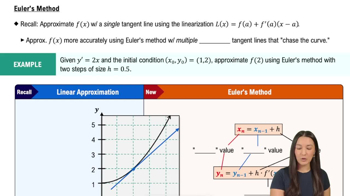7–84. Evaluate the following integrals.
11. ∫ from 0 to π/4 (sec x – cos x)² dx
 Verified step by step guidance
Verified step by step guidance Verified video answer for a similar problem:
Verified video answer for a similar problem:



 8:38m
8:38mMaster Indefinite Integrals with a bite sized video explanation from Patrick
Start learning